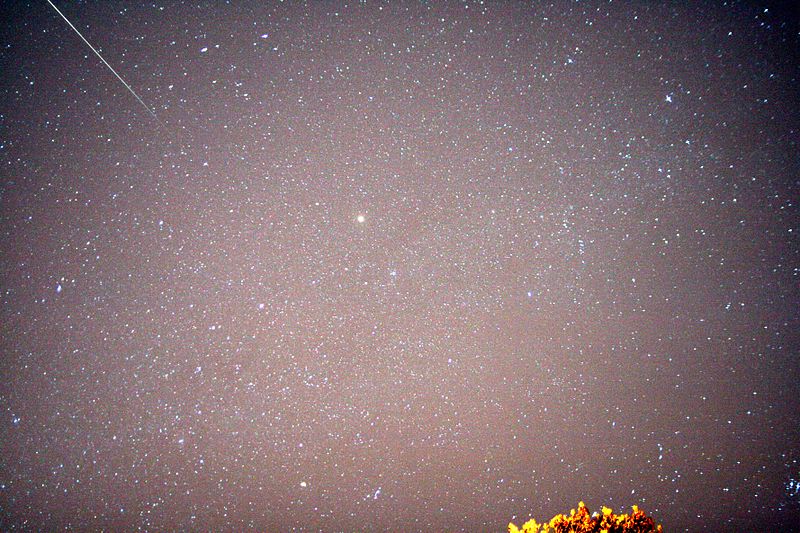We're open daily! View holiday hours
Science News
Geminids "Plus” Shower
December 13, 2012
by Bing Quock

Right now, Earth is passing through the debris-trail of asteroid 3200 Phaeton, causing the annual Geminid meteor shower, usually regarded as the most reliable meteor display of the year, active from December 4th through 17th and peaking on December 13th.
Away from city lights, patient observers may be able to see between 80 and 100 meteors per hour, especially in the absence of bright moonlight – a bonus this year, since the peak coincides with a new moon.
As Earth plows through the particles of dust in this trail, they stream through our atmosphere at speeds of about 22 miles per second (or nearly 80,000 miles per hour), burning up and causing the brief streaks of light known as meteors. As with all other meteor showers, the Geminids are named after the constellation from which they seem to radiate. Although they can appear anywhere in the sky, the effect of perspective causes the parallel paths of the meteors to apparently converge in the distance, at a point called the “radiant,” and the radiant for the Geminids happens to be located against the stars of the constellation Gemini the Twins.
In addition to the Geminids, however, astronomers say that for the first time, Earth is also passing through the dust stream left behind by another source, Comet Wirtanen. This may create a new meteor shower nested within the Geminids. Russian astronomer Mikhail Maslov predicts as many as four crossings of Wirtanen’s dust stream between December 10th and 14th, during which time observers may see approximately 30 meteors per hour radiating from the stars of Pisces the Fishes, a constellation which lies nearly overhead just after sunset.
Although Comet Wirtanen’s stream is well-established, Earth hasn’t passed through it until now, so astronomers suggest that if you see a meteor whose trail leads toward Pisces instead of Gemini, you may have just made history, observing part of a meteor display that no one (on our planet, anyway) has ever seen before.
Bing Quock is the assistant director of the Morrison Planetarium.
Image: Brocken Inaglory/Wikipedia